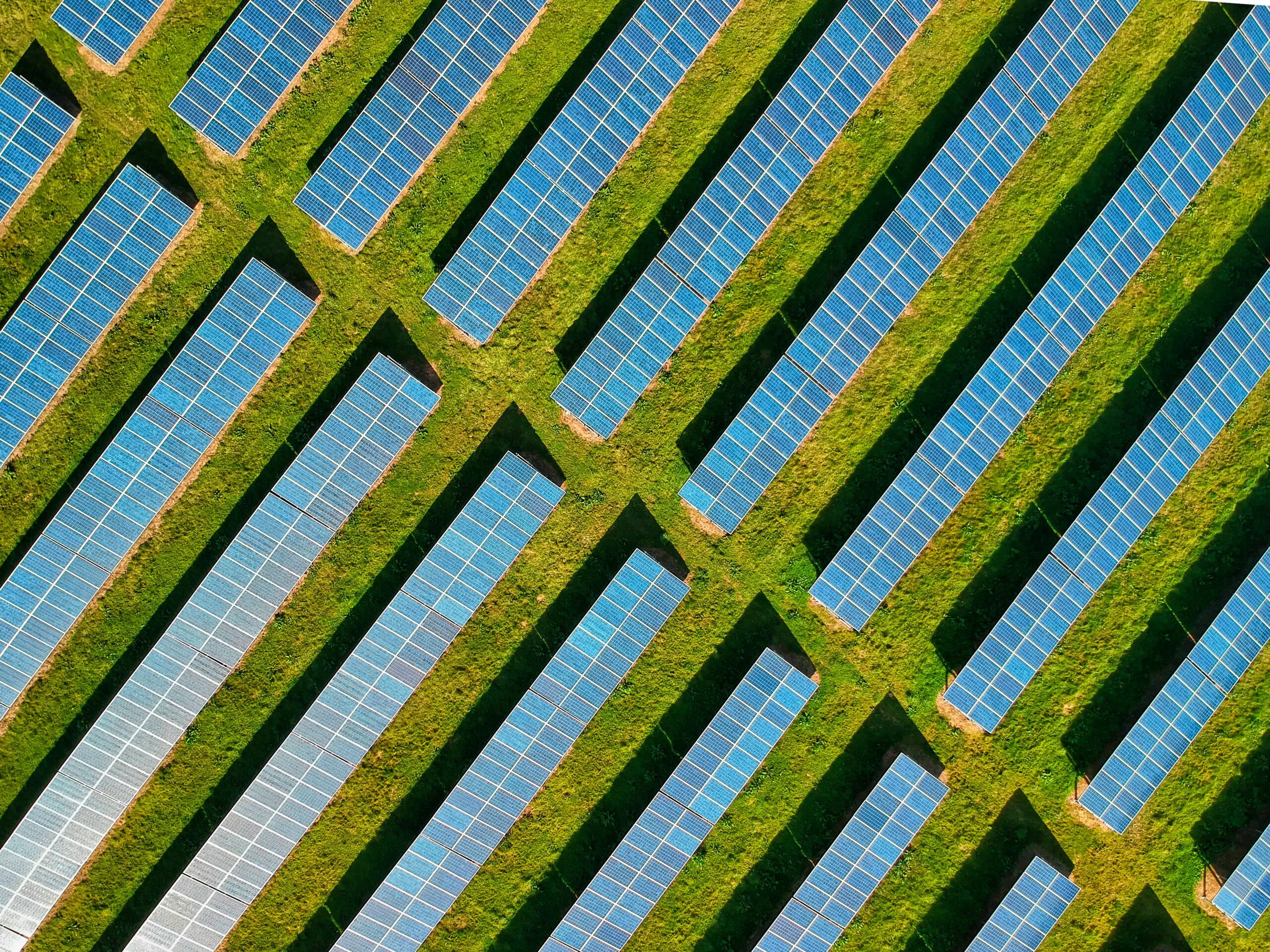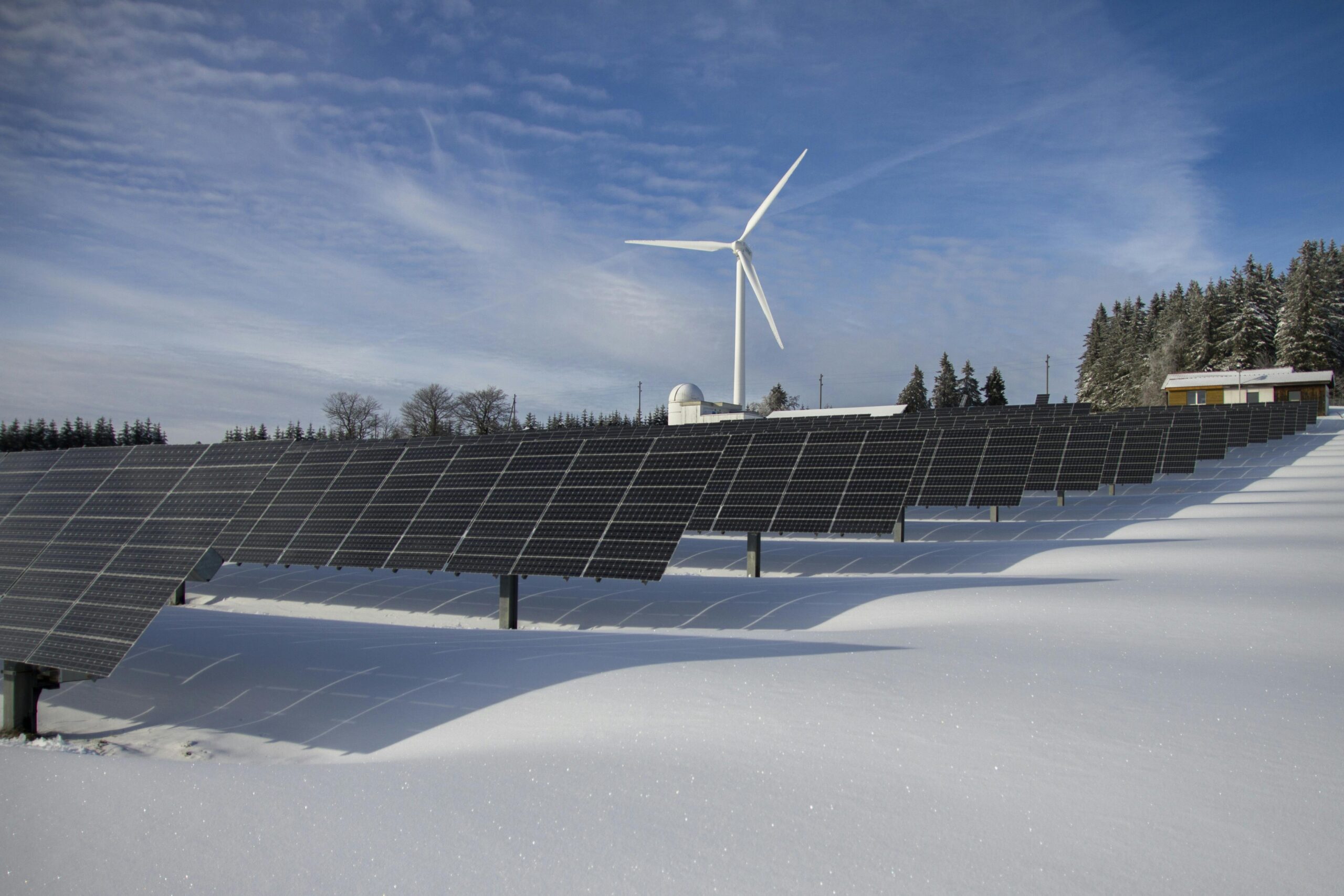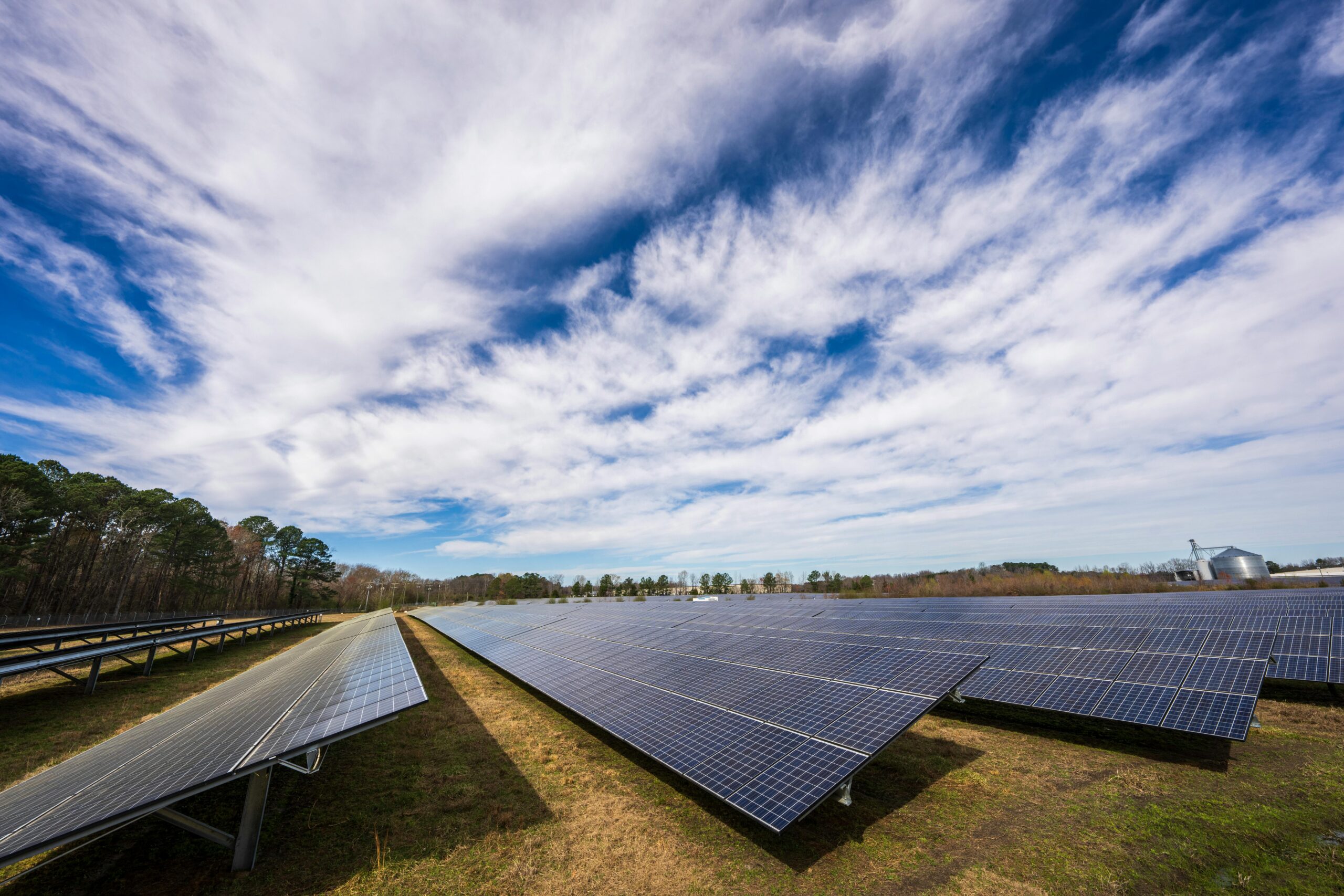Optimizing Solar Energy with Tracker Systems
Harnessing solar power efficiently requires more than just high-quality photovoltaic (PV) panels. To maximize energy production, modern solar farms increasingly rely on tracker systems—advanced technologies that allow solar panels to follow the sun's movement throughout the day. These systems significantly enhance power output and efficiency, providing a greater return on investment (ROI) for commercial and utility-scale solar projects.
At Ansgar Solar, we specialize in tracker system installation, ensuring that panels are optimally angled to capture the maximum amount of sunlight. In this blog, we will explore what tracker systems are, their benefits, types, and their growing role in the solar industry.
What Are Solar Tracker Systems?
Solar tracker systems are mechanized mounting structures designed to adjust the position of solar panels so they can maintain an optimal angle relative to the sun. Traditional fixed-tilt solar arrays remain in one position throughout the day, which can limit energy capture. In contrast, tracker systems continuously move panels to follow the sun's trajectory, ensuring maximum exposure to sunlight from sunrise to sunset.
By optimizing solar panel orientation, these systems increase energy generation by 15% to 45%, depending on location, climate, and system type.
Types of Solar Tracker Systems
- Single-Axis Trackers
Single-axis tracker systems move horizontally along one axis, typically east to west. They adjust the tilt of solar panels throughout the day to follow the sun's movement, improving energy capture compared to fixed-tilt panels.
- Best for: Utility-scale and large commercial solar farms
- Efficiency Increase: 15%–25%
- Pros: Cost-effective, simple operation, reliable performance
- Cons: Less energy optimization than dual-axis systems
- Dual-Axis Trackers
Dual-axis trackers adjust both vertically and horizontally, following the sun’s path more precisely. This allows panels to capture the maximum possible sunlight throughout the year, regardless of seasonal changes.
- Best for: High-latitude locations and projects requiring maximum efficiency
- Efficiency Increase: 30%–45%
- Pros: Highest energy yield, adaptable to seasonal variations
- Cons: Higher initial cost, increased maintenance needs
Key Benefits of Tracker Systems
- Increased Energy Production
Tracker systems allow solar panels to absorb more sunlight, resulting in significantly higher energy output compared to fixed-tilt systems. According to the U.S. Department of Energy, single-axis trackers can increase energy production by up to 25%, while dual-axis trackers can boost production by up to 45%.
- Greater Return on Investment (ROI)
Higher energy production translates into greater revenue and faster payback periods for solar project owners. While tracker systems require a higher upfront investment than fixed-tilt structures, their ability to generate more power per panel makes them cost-effective in the long run.
- Space Optimization
By dynamically adjusting to the sun’s position, tracker systems allow for more efficient land use. This is particularly beneficial for large-scale solar farms where maximizing production per square foot is crucial.
- Improved Grid Stability and Reliability
Incorporating tracker systems in solar farms helps stabilize power output by reducing energy fluctuations. With consistent and predictable energy generation, these systems contribute to a more reliable and efficient renewable energy grid.
- Environmental Impact
Tracker systems reduce the levelized cost of electricity (LCOE) by improving efficiency. A higher energy yield with fewer panels means less land use, fewer materials for installation, and a smaller environmental footprint.
Challenges and Considerations
While solar tracker systems offer multiple advantages, it’s important to consider factors like cost, maintenance, and site suitability before installation.
- Higher Upfront Costs
Tracker systems cost more than traditional fixed-tilt mounting structures due to mechanical components, sensors, and motors. However, their increased energy production offsets initial expenses over time.
- Maintenance and Durability
Moving parts introduce a higher risk of wear and tear, making regular maintenance essential to prevent downtime. Fortunately, modern trackers are built with durable materials and advanced monitoring systems to detect malfunctions early.
- Site-Specific Suitability
- Flat, open landscapes are ideal for tracker systems.
- Areas with frequent cloud cover or extreme weather may see diminished benefits.
- Strong winds and heavy snowfall can affect performance, requiring robust structural design.
Why Choose Ansgar Solar for Tracker System Installation?
At Ansgar Solar, we specialize in high-quality tracker system installation to maximize energy efficiency and project ROI. Our expert team ensures that each system is designed, installed, and maintained to withstand environmental challenges while delivering consistent, high-performance energy output.
Our Tracker System Services Include:
- Site assessment and feasibility analysis
- Custom design solutions based on energy needs
- Installation of single-axis and dual-axis trackers
- Ongoing maintenance and support
- Integration with energy storage systems for optimized grid support
The Future of Solar Tracker Systems
As solar technology continues to advance, the use of tracker systems is expected to grow rapidly. Innovations in AI-driven tracking algorithms, weather-adaptive designs, and predictive maintenance will make trackers even more efficient and cost-effective.
Additionally, the global push toward renewable energy adoption means that solar farms will need to maximize energy production to remain competitive. Governments and organizations worldwide are increasingly investing in tracking technology to meet ambitious clean energy goals.
Conclusion
Solar tracker systems are revolutionizing the renewable energy sector by increasing efficiency, optimizing land use, and enhancing ROI for solar farm operators. With the ability to boost energy output by up to 45%, these systems offer a smarter, more sustainable approach to solar power generation.
At Ansgar Solar, we are committed to delivering best-in-class tracker system installations to help our clients achieve maximum energy production and long-term savings.
Interested in learning more? Contact Ansgar Solar today to find out how our tracker system solutions can take your solar project to the next level.
Pile Driving: The Foundation for Long-Lasting Solar Installations
As the demand for renewable energy grows, the need for durable, high-performance solar installations has never been greater. One of the most critical aspects of a successful solar project is its foundation. Pile driving plays a vital role in ensuring the stability and longevity of solar arrays, particularly in utility-scale and commercial solar farms. At Ansgar Solar, our services are designed to provide precise, reliable, and environmentally conscious support systems that anchor solar panels against varying environmental conditions.
What Is Pile Driving?
Pile driving is the process of installing deep foundations by driving long, durable steel or concrete piles into the ground. These piles serve as the structural base for solar arrays, ensuring they remain secure against wind loads, soil shifts, and weather fluctuations. Unlike traditional concrete foundations, pile driving provides a faster and more cost-effective solution with minimal site disruption and environmental impact.
Why Pile Driving Is Essential for Solar Installations
Solar energy systems, particularly large-scale solar farms, are exposed to diverse environmental challenges, including:
- High winds and storms
- Varying soil conditions
- Temperature fluctuations
- Seismic activity
Without a robust foundation, solar arrays risk misalignment, structural failure, or costly repairs. Pile driving ensures the long-term performance and reliability of these systems by anchoring them securely into the ground.
The Benefits of Pile Driving for Solar Projects
1. Increased Stability and Durability
Pile-driven foundations provide unmatched structural integrity, ensuring solar panels remain properly positioned and efficient over time. Unlike shallow foundations, driven piles reach stable soil layers, preventing movement due to erosion or shifting soil.
2. Faster Installation Times
Time is crucial in solar projects. Pile driving is significantly faster than traditional foundation methods. Ansgar Solar’s advanced equipment and experienced operators ensure quick and efficient installation, reducing overall project timelines.
3. Environmental Sustainability
Minimizing environmental impact is a top priority for solar developers. Pile driving is an eco-friendly foundation technique, as it requires little to no excavation and eliminates the need for concrete, which has a high carbon footprint. Additionally, pile-driven foundations can often be removed and reused or recycled at the end of a solar farm’s lifecycle.
4. Cost-Effectiveness
Pile driving reduces costs associated with labor, materials, and maintenance. With faster installation and minimal site preparation, developers can allocate resources more efficiently, leading to a better return on investment.
Ansgar Solar’s Pile Driving Services
At Ansgar Solar, we specialize in precision-driven pile foundation solutions that ensure the stability and longevity of solar arrays. Our services are tailored to meet the needs of utility-scale and commercial solar projects, offering:
- Advanced Machinery: We utilize state-of-the-art pile driving equipment to ensure accurate installation.
- Expert Operators: Our experienced team ensures piles are driven to exact specifications, maintaining structural integrity.
- Site-Specific Solutions: We assess soil conditions and environmental factors to determine the best pile driving strategy.
- Sustainable Practices: Our environmentally conscious approach minimizes land disturbance and reduces material waste.
Key Considerations in Solar Pile Driving
1. Soil Analysis and Load Testing
Before pile installation, an in-depth geotechnical survey is conducted to determine soil composition, bearing capacity, and potential obstructions. This ensures that the piles used will effectively support the solar structure.
According to the U.S. Department of Energy (energy.gov), soil conditions play a crucial role in determining the stability of solar farm foundations. Poor soil conditions can lead to sinking or tilting, making thorough testing essential before pile installation.
2. Pile Selection
The type of pile used depends on soil conditions, project size, and environmental factors. Common options include:
- Steel piles: Durable and corrosion-resistant, ideal for most soil types.
- Concrete piles: Used in locations requiring extra reinforcement.
- Helical piles: Suitable for areas with soft or loose soil.
3. Depth and Alignment Precision
Piles must be driven to exact depths and angles to provide maximum stability. Ansgar Solar utilizes GPS-guided and automated systems to ensure precise alignment, preventing installation errors that could compromise the solar array’s performance.
4. Resistance to Wind and Seismic Forces
Strong foundations are necessary to withstand wind loads and seismic activity. The Federal Emergency Management Agency (FEMA) recommends incorporating resilient foundation designs to protect against environmental stressors in solar energy installations.
How Pile Driving Enhances Solar Efficiency
A well-anchored solar array performs better over time, minimizing maintenance costs and ensuring peak energy output. Some ways pile-driven foundations enhance efficiency include:
- Minimizing panel misalignment, which can reduce energy capture.
- Reducing shading and tilt adjustments due to shifting ground conditions.
- Improving load distribution, preventing stress fractures on the panels and mounting structures.
Conclusion
The foundation is the most crucial aspect of any solar installation, and pile driving is the superior choice for ensuring durability, efficiency, and sustainability. At Ansgar Solar, we provide top-tier pile driving solutions backed by advanced technology, expert craftsmanship, and eco-friendly practices.
By leveraging precision engineering and sustainable methods, we help solar developers create reliable energy infrastructure that stands the test of time. Whether it's a small commercial project or a large-scale utility solar farm, our pile driving services set the groundwork for success.
For more information on how Ansgar Solar can support your next solar project, contact us today.
Solar Labor Services for Efficient Project Execution
As the solar industry continues to expand, the demand for specialized labor solutions has never been greater. The increasing adoption of renewable energy, driven by both economic and environmental incentives, requires a reliable workforce capable of supporting large-scale solar projects. From initial site preparation to the final installation, having access to experienced and adaptable labor is critical for maintaining project efficiency, safety, and quality.
The Role of Skilled Labor in Solar Construction
Solar projects require a workforce skilled in various aspects of construction, electrical work, and system integration. Whether it’s handling photovoltaic (PV) module installation, managing tracker systems, or overseeing pile driving operations, each phase of a solar project depends on specialized expertise. Ansgar Solar provides flexible labor solutions that align with the evolving needs of solar energy developers, ensuring that projects remain on schedule and within budget.
General Labor Support
Solar projects often demand a significant number of general laborers for tasks such as site clearing, material handling, and foundation work. These roles may not require advanced technical expertise but are essential in keeping the workflow steady and organized. Proper training and safety protocols enable these workers to contribute effectively while maintaining a secure work environment.
Technical Labor and Specialized Support
Beyond general labor, solar projects require skilled technicians who understand the intricacies of solar panel installation, electrical wiring, and mounting system assembly. A workforce trained in industry best practices contributes to greater energy output, improved longevity of the system, and fewer operational setbacks. Technicians adept at troubleshooting and conducting quality assurance checks play a vital role in ensuring system performance meets or exceeds expectations.
Flexibility in Solar Workforce Solutions
Project timelines in the solar industry can be highly variable due to factors such as permitting delays, weather conditions, and supply chain disruptions. A flexible labor model allows solar developers to scale their workforce up or down based on current project needs. Ansgar Solar specializes in providing adaptable staffing solutions, offering workforce support that aligns with fluctuating project demands without compromising productivity or efficiency.
Short-Term vs. Long-Term Labor Needs
Some solar projects may require temporary labor for rapid deployment, while others benefit from a consistent workforce throughout the entire construction phase. Partnering with a labor provider that understands these dynamics allows solar firms to allocate resources effectively and avoid unnecessary overhead costs.
Safety and Productivity in Solar Labor Services
The solar industry prioritizes workplace safety, given the nature of construction work and electrical installations. According to the Occupational Safety and Health Administration (OSHA) proper safety training, equipment handling, and compliance with industry regulations significantly reduce the risk of job site incidents. A workforce trained in safety best practices not only protects workers but also prevents costly project delays due to injuries or compliance violations.
Moreover, productivity in solar labor services hinges on the ability to work efficiently while maintaining high-quality standards. Proper training, clear communication, and the use of advanced tools and methodologies contribute to a smoother project flow.
The Impact of Labor on Solar Project Costs
Labor represents a substantial portion of the total costs in solar project development. According to the U.S. Department of Energy (DOE), labor costs can account for up to 30% of the total expenses in utility-scale solar installations. Efficient labor management—through strategic workforce planning, skilled staffing, and the integration of advanced construction techniques—helps optimize costs while maintaining project integrity.
The Future of Solar Labor Services
As solar technology advances and project scopes become more complex, the demand for experienced labor solutions will continue to rise. Emerging trends such as robotic-assisted installations and automated tracking systems may reduce some manual labor requirements, but human expertise will remain essential for ensuring seamless project execution.
Ansgar Solar remains committed to providing the industry with a skilled, adaptable, and safety-conscious workforce. By offering tailored labor solutions for every phase of solar construction, we contribute to the ongoing expansion of renewable energy infrastructure while supporting project developers in meeting their goals efficiently and cost-effectively.
Conclusion
The success of solar projects depends not only on high-quality materials and engineering but also on the availability of skilled labor. With a strong workforce strategy in place, developers can navigate project complexities, maintain high safety standards, and achieve optimal efficiency. Ansgar Solar continues to support the renewable energy sector by delivering reliable labor solutions that keep projects moving forward with confidence.
For solar developers seeking a workforce that meets the highest industry standards, partnering with a dedicated labor provider is a strategic step toward long-term success.



